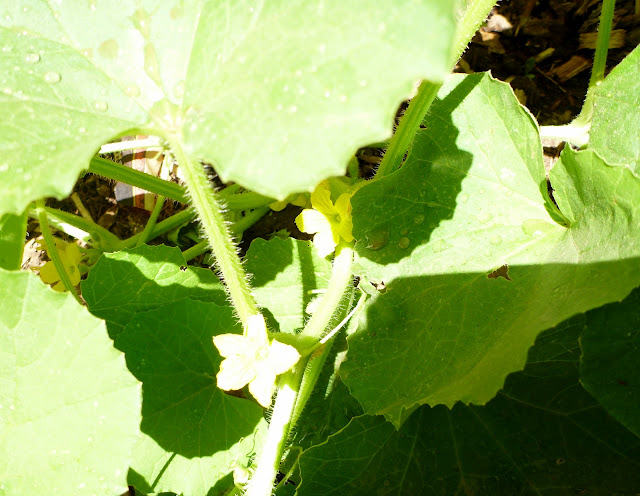It's been a while since we've written but a lot has happened since we last posted.
The heat has been increasingly drying. We deep water nearly every day now. A boisterous rainstorm the other day flooded the yard with much needed moisture but smaller seedlings have dried up in just a few days absence of our watering routine. Only the thick-rooted, absorbent plants survive here.
Weeding is more work than usual; they seem to be sprouting constantly. It keeps us busy maintaining the yard but we don't hesitate to visit the garden.
The heat has been increasingly drying. We deep water nearly every day now. A boisterous rainstorm the other day flooded the yard with much needed moisture but smaller seedlings have dried up in just a few days absence of our watering routine. Only the thick-rooted, absorbent plants survive here.
Weeding is more work than usual; they seem to be sprouting constantly. It keeps us busy maintaining the yard but we don't hesitate to visit the garden.
 |
| Our first salad harvest! Greens like mad, green onion and oregano. |
 |
| The greens are quite prolific, despite the 3 hours or so of direct sunlight they receive. |
 |
| Our productive cucumber plants. |
 |
| Cucumber flowers. |
 |
| Salvia gregii, French dwarf marigolds, and possibly tomatillos. |
 |
| Our cat prowling the roadrunner. |
 |
| S/He knows. |
 |
| Our flower garden sunflowers. |
 |
| We can't quite tell what these are but they're the first flowers to have opened this season. |
 |
| Jordan slowly soaking our squash and watermelon rows. |
 |
| Lazarus, the grape cutting we thought had died. |
 |
| Another soon-to-bloom sunflower. |
 |
| The nightshades bed panorama. |




